Growing Chinese Red Noodle Beans & Plant Profile
Learn how to grow and enjoy Chinese Red Noodle Beans, a variety of yard long bean that produces plentifully and performs well in hot weather!
Let them get a bit unruly and overgrown though, and you might just find yourself having a fright- the overgrown beans that grow close to the ground can sometimes look startlingly snake-like! (See our photo further down in this article.)
Yard long beans are legumes that are closely related to cowpeas (also called black-eyed-peas or southern peas).
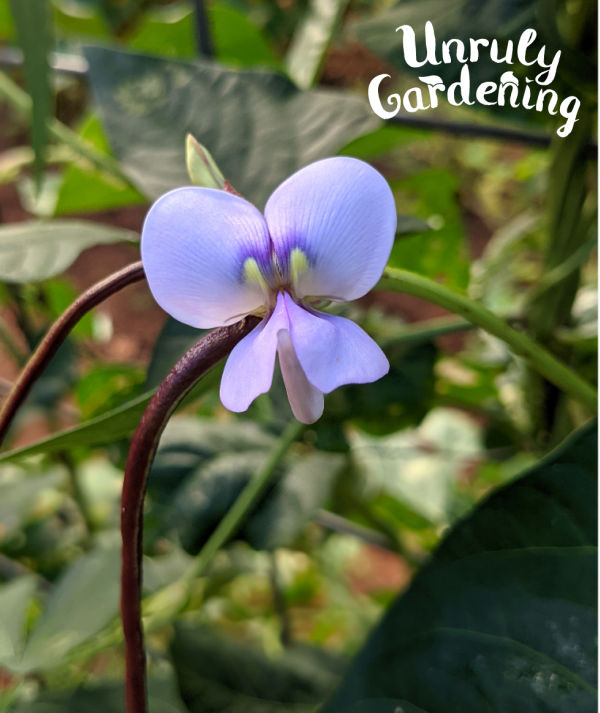
About Chinese Red Noodle Bean:
- Plant: Heirloom Yard-long Bean (Vigna unguiculata ssp. sesquipedalis)
- Color: Pods are a rich red color. Foliage is green.
- Days to maturity: 80 days.
- Frost-hardy: No
- Lifespan: Annual
- When to plant: Direct-sow outdoors after all risk of frost has passed.
- Edible: Yes
- Part eaten: Pods
- Requires support: Yes
Where to buy:
We bought ours from Baker Creek Heirloom Seeds, but other online sources also carry these seeds. A quick search will show you your other options!
How to grow:
Before you sow your seeds, you’ll save yourself a lot of trouble if you go ahead and set up a trellis now. Alternatively, you can set up poles for them to climb up.
Letting them grow up cattle panel arches worked extremely well for us – consider planting these seeds near a fence or similar support if you don’t have access to a trellis, cattle panels, or poles.
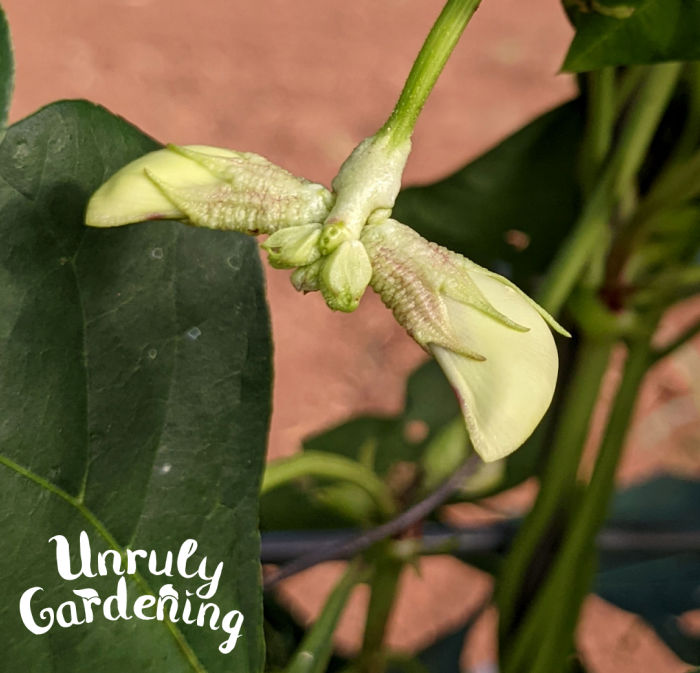
Location
Choose a place that gets full sun, with soil that is well-draining (meaning it’s not swampy for weeks after it rains!). They thrive in warmth and heat, so don’t worry about sheltering them from summer’s unforgiving sun- they’ll adore every scorching ray!
Good news for those of you with sandy soils- these yard-long beans will do just fine in your garden! Poor soils that tend to be on the drier side make for happy growing for these cowpea-variants. For those of us in more clay-country areas, either try sticking these seeds in one of your drier corners, or consider amending a bit with sand to loosen things up.
Sowing
Once all risk of frost has past, you’re good to plant! Soak the seeds overnight to get a head-start on germination.
Outdoors, drain off the water from your seeds, and being careful not to crush or damage them, sow the seeds 1/2″-1″ deep, and 6″ apart from one another. Cover the seeds with the soil, and water well.
Keep soil evenly moist until germination, which should occur in 4-8 days. Warmer weather means quicker germination!
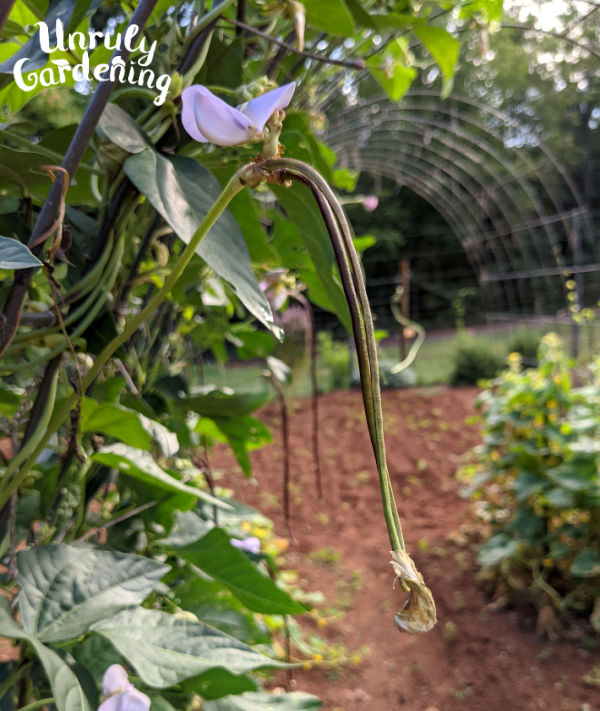
Other Care:
You may have to help the beans weave themselves into the trellis at first. Just gently weave and tuck the vines through, until they begin to do it themselves. You may still need to tuck the occasional wandering tendril back in every so often.
Chinese red noodle beans tend to be more resistant to insect pests than other beans, but you may still encounter some damage. If bean beetles are a menace, take measures to get rid of them. Hand-picking is one option, if the infestation is a light one.
Another idea is to cover the beans and their trellis completely with insect netting before the seeds even germinate, only removing the netting long enough to harvest the beans before covering again.
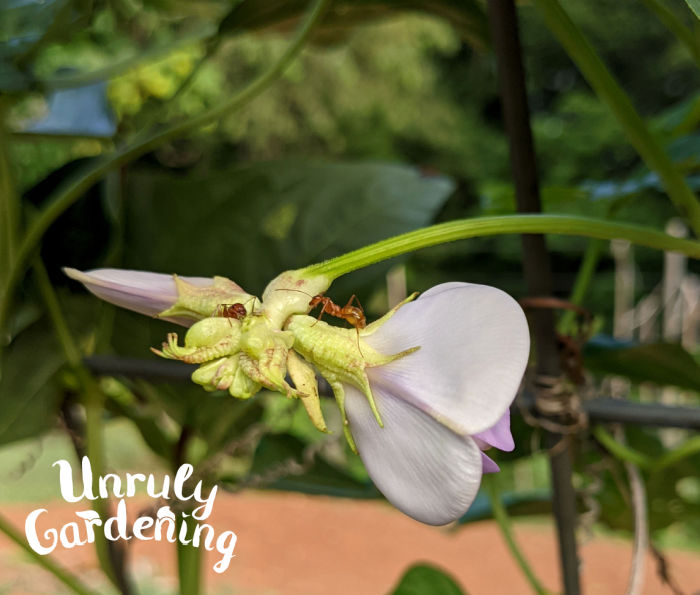
Ants!
One particular thing to note about these beans is that at just about every flower, you can expect to find some ants. This might be alarming at first glance, but don’t worry! They aren’t going to harm your beans and they won’t eat the leaves.
The beans secrete a nectar that attracts ants that help protect the plant from pests. There’s no reason to drive them away- just be careful when you pick, and you and the ants can peacefully co-exist with your noodle beans.
Harvesting & Using:
These beans make for satisfying harvesting- they’re heavy bearers and very easy to pick, the long red beans quickly adding up to fill a basket.
Pick while they’re young and tender as neglected beans can quickly grow huge.
Below is a photo from a neglected patch of red noodle beans in late summer – the forgotten beans grew so large, we kept getting startled by the snake-like appearance of them lying on the ground every time we walked by!
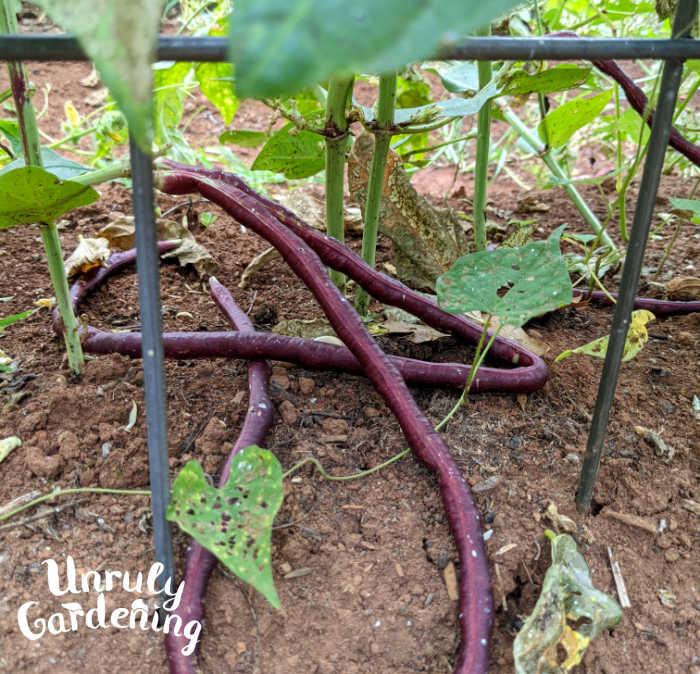
Harvesting
Chinese red noodle beans don’t all get ripe at the same time. Once they start producing, odds are you’ll end up with a daily harvest of anywhere from a few beans to a handful to a basket, depending on how many you planted!
The beans grow in pairs, but even paired beans might not get ready at the same time. Just pluck the ready bean, and leave the other one to keep maturing further.
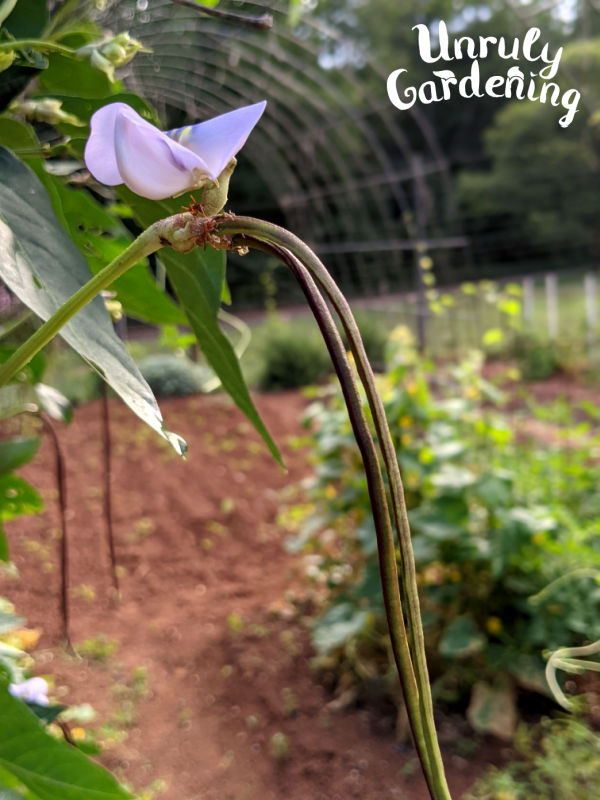
Harvest the beans when they’re about the thickness of a pencil, before the seeds inside have gotten a chance to develop much. Pods that are bulging out where the seeds inside are located are too far overripe, and will likely be too tough to make a pleasant meal. This can happen quicker than you think!
An unripe bean of last night can be a perfectly-ripe one in the morning, so daily checking is ideal. Swift to mature and heavy-yielding means that these plants can sometimes get away from people- they really do grow astonishingly fast. Just try to keep on top of them as best you can!
What do they taste like?
Chinese red noodle beans have an earthy taste that’s reminiscent of mushrooms, or cowpeas (black-eyed-peas), or asparagus – depending on who you ask, opinions differ even within our own family!
They’re stringless, and, if harvested at the correct time, there should be no toughness to the skin.
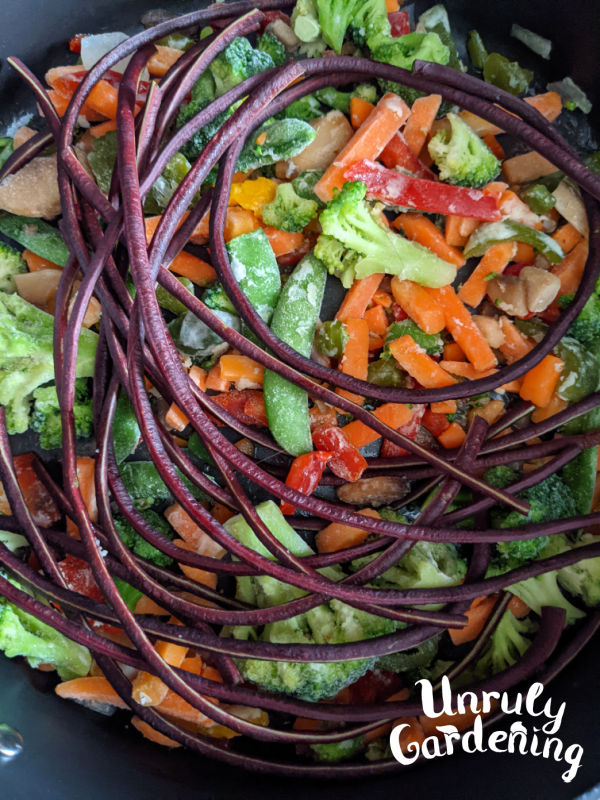
Using
Fresh yard long beans can used whole, or chopped into smaller sizes.
You can eat them raw, or cook them like green beans, or add them to stir fries, or drop them into a crockpot meal. (We like adding them to a beef or venison roast meal, similar to adding mushrooms.) Some gardeners enjoy pickling them too!
The shoot tips and young leaves are also sometimes eaten, mostly in stir fries.
As for how the beans behave, that lovely red color tends to stick around during most cooking methods. Many colorful beans lose their color in the cooking process, but not Chinese red noodle beans!
Storage
Fresh beans can be kept in a bag in the refrigerator for a few days. This is handy if you only have a few plants and you’re trying to collect more for a dish. Discard the beans if they start to become soft and limp- they’ve gotten a bit too old at this stage.

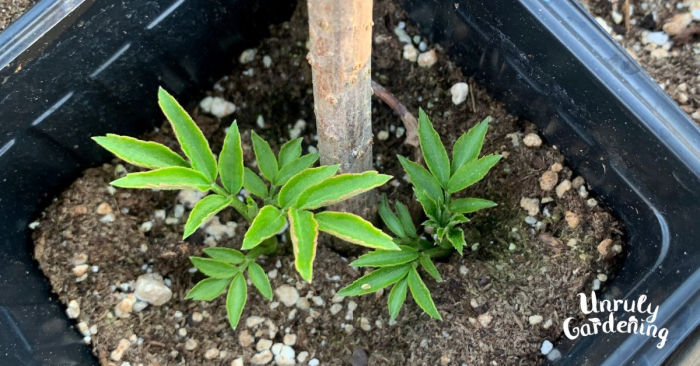
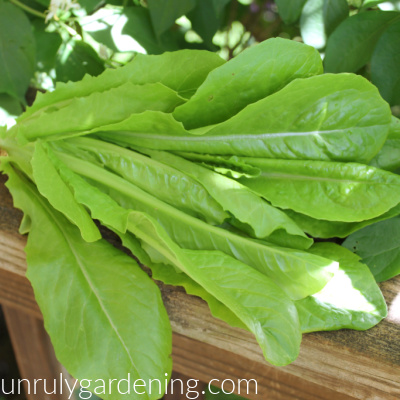
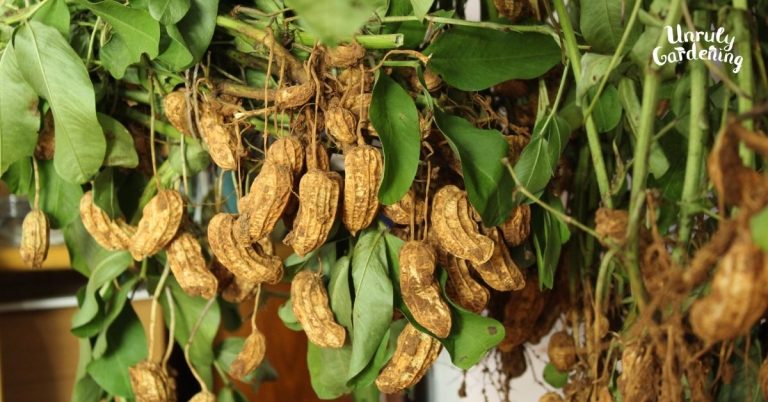
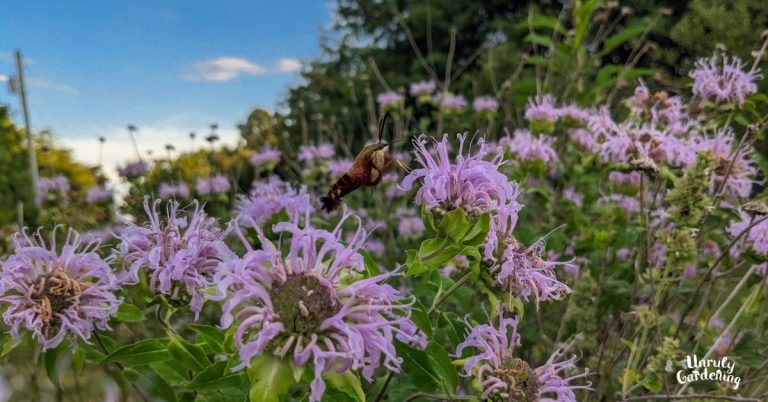
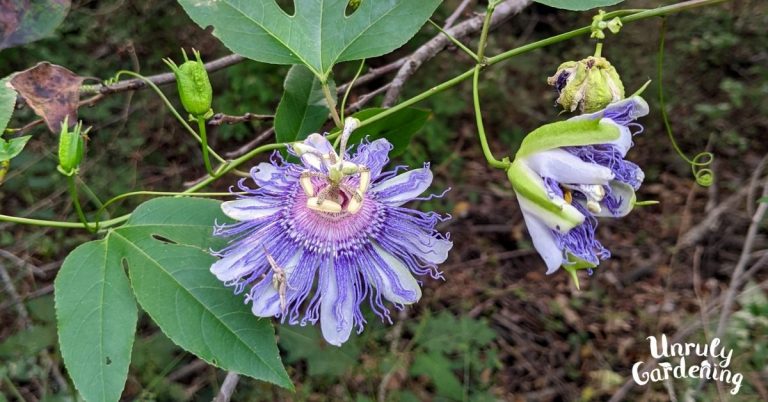
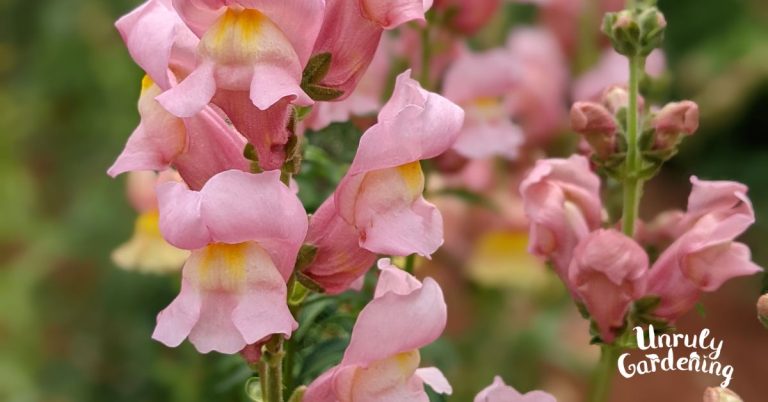
Hello
Thanks for these interesting posts.
I love beans and I grow lots of different types on my allotment.
Do you know if the Chinese yardlong beans can be dried for future use?
Maria
Hi Maria, I’m so glad you enjoyed the articles! I’ve seen a few people mention drying them for soup beans, and others successfully dehydrate them, but we haven’t tried that yet ourselves. Hopefully that happens this year!
I’m growing these beans this heat. I have two cattle panels side by side with crn beans growing up them all the way to the top. Haven’t picked any yet. My question is since I’ll have more than I can eat how do I store them? I plan to share them with everyone so others can experience them as I, but I’m gonna have way more than that.
Thx
RC
Hi Ruth, How wonderful to have beans to share with others! I know it will be really appreciated by them, especially with the cost of food going up so much!
You can store the beans in the fridge for about 3 days.
We keep ours tied up in a plastic grocery bag with the top gapped open to allow air flow.
Another thing I do, is invite family members over to ‘pick their own’ on different days – that way they can grab what they want and then take them home to keep in their own fridge, so I don’t run out of space in mine.
I hope you and your family/friends enjoy your beans!
Hi there,
I enjoyed your article. Just a quick question. I am growing the Chinese red noodle beans but mine are not long like all the others I’ve seen. They are also only lightly tinted red. I saw in the article that the light tint is okay but any idea why they are so short in comparison to most others? The beans are only about 8 inches long. Most of the ones I’ve seen in picture online are twice that length. I’m wondering if there is a nutrient deficiency or something else. Thanks for you help!
Best,
Sophia
Hi Sophia! I wonder if you have a different variety of bean? A trait of Chinese red noodle beans (yard long beans) is how long they grow.
They quickly grow long even when we put them in some of our worst soils, so I’m not sure it’d be a nutrient deficiency?
Maybe try buying a fresh pack from a different vendor & plant out both of the seed types to compare as they grow.
We did a similar thing one year: The first year we ordered Dragon Tongue beans, we were accidentally sent Tongue of Fire beans & were really puzzled that they looked different than expected until we figured that out.
So the next year we ordered several packets of both kinds of bean seeds from different companies to grow out, and make sure we had the correctly labeled beans.
Even our favorite seed sellers have made mix ups with mislabeled packets, so that’s the direction I’d explore first! 🙂
Hello from Oregon!
What an incredibly helpful post. I think you’ve inspired me to finally plant these this summer.
Hi Corrie,
I’m so happy you found the article helpful!
Happy gardening!
I have grown this bean for the first time this year! 3 plants were given to my husband from a coworker. We harvested the first run last week & they were delicious! I am letting some pods get fully ripe on the vine to save the seeds to plant next Spring! I broke them like my other pole beans & each bean provided 4-5 short ones to cook. I prepared them exactly like I do my regular size green beans. Blessings ????
Hi Allison! That’s so good to hear that you enjoyed growing & eating Chinese red noodle beans!